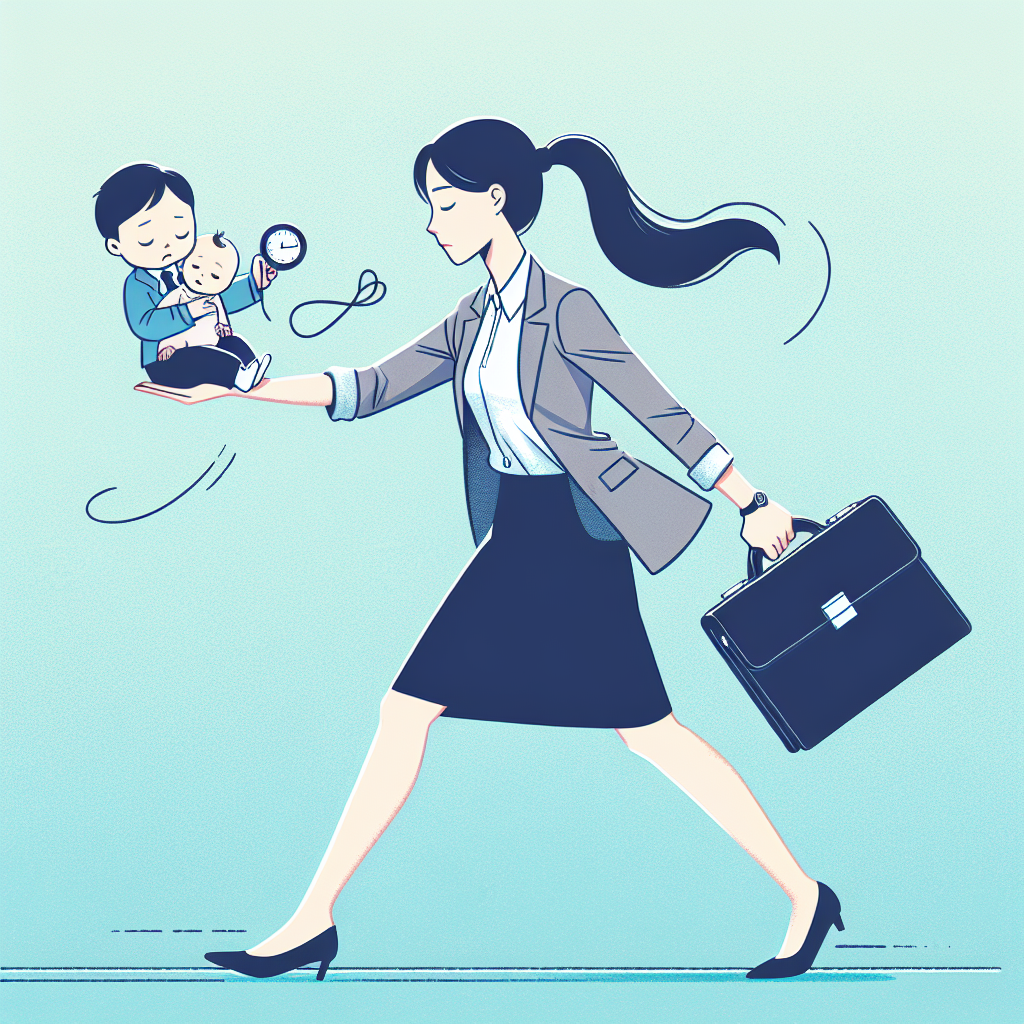A recent report by the Resolution Foundation has found that young people in their early 20s are more likely to be out of work due to ill health compared to those in their early 40s. This is a significant shift from the past, where older individuals were more likely to be unemployed due to sickness. The report highlights the rising prevalence of poor mental health among young people, which can negatively impact their education and employment prospects. In 2023, 5% of young people were economically inactive due to ill health. The report also reveals that young people now have the highest incidence of mental disorders compared to any other age group.
The study shows that in 2021/22, 34% of young people aged 18 to 24 reported symptoms of a mental disorder, such as depression, anxiety, or bipolar disorder. This is a substantial increase from 2000 when the figure stood at 24%. As a result, over half a million 18 to 24-year-olds were prescribed anti-depressants in 2021-22. The report emphasizes that poor mental health has the most severe economic consequences for young people who do not attend university, with one in three young non-graduates currently unemployed due to a common mental disorder.
The research also reveals that young women are more likely to experience poor mental health compared to young men, with 41% of women and 26% of men reporting mental health issues. Furthermore, 79% of 18 to 24-year-olds who are not working due to ill health have qualifications at GCSE level or below, compared to 34% of all individuals in that age group. The report suggests that poor mental health in children aged 11 to 14 can significantly impact their academic performance, as they are three times more likely to fail five GCSEs including English and Maths.
In response to these findings, the Resolution Foundation is calling for better mental health support in colleges and sixth forms, as well as efforts to improve educational outcomes for young people. The Health Foundation, which funded the research, emphasizes the importance of good employment and education as the building blocks of health. They urge cross-government action to prevent a “lost generation” due to poor mental health. Experts also highlight the need for a coordinated approach to address the mental health crisis in the UK, with increased funding and early intervention programs.
Gary Siva, from the online mental wellbeing platform Zumos, stresses the urgent need to support young people’s mental health. He attributes the crisis to factors such as social media, which has shifted the focus of validation from oneself or family to friends online. Siva also notes that issues like bullying, which previously stayed within the school environment, now extend beyond the school gates. The study’s findings are based on the Labour Force Survey, although the Office for National Statistics has recently discontinued the survey due to declining participation. However, the Health Foundation believes the data is still reliable for analysis purposes.
Original news source: More people in early 20s out of work from ill health than early 40s – study (BBC)
🎧 Listen:
Slow
Normal
Fast
📖 Vocabulary:
| 1 | prevalence | The state of being widespread or commonly occurring |
| 2 | economically | Relating to the management of resources, especially in the sense of personal or national income and wealth |
| 3 | incidence | The rate or frequency of a particular event, typically one considered negative |
| 4 | prescribed | Officially recommended or advised as a course of action |
| 5 | consequences | The outcomes or effects that follow from a particular action or condition |
| 6 | non-graduates | Individuals who have not completed a university degree |
| 7 | qualifications | Credentials or achievements indicating a person’s skill or education level |
| 8 | academic | Pertaining to the study or scholarship, especially at an advanced level |
| 9 | emphasis | The act of giving special importance or significance to something |
| 10 | foundational | Serving as a basic or essential component of a system or structure |
| 11 | coordinated | Involving the organization and coordination of activities to achieve a unified effect |
| 12 | intervention | The process of coming into play or becoming active in influencing or altering a situation |
| 13 | validation | The act of confirming or supporting the value or worth of something or someone |
| 14 | bullying | The act of intimidating or harassing someone in a harmful or aggressive manner |
| 15 | discontinued | Stopped from continuing or being in use or effect |
Group or Classroom Activities
Warm-up Activities:
– Charades
Instructions: Divide the class into small groups. Give each group a list of keywords from the article related to mental health and employment. One member from each group will choose a word from the list and act it out without speaking. The rest of the group must guess the word within a certain time limit. The group that guesses the most words correctly wins.
– News Summary
Instructions: Have the class work individually or in pairs. Ask them to read the article and write a summary of the main points. They should include information about the rising prevalence of poor mental health among young people, the impact on education and employment, and the call for better mental health support. After they have finished, have them share their summaries with the class and discuss any differences or similarities.
– Opinion Poll
Instructions: Divide the class into pairs or small groups. Provide them with a list of statements related to the article, such as “Young people today face more mental health challenges compared to previous generations” or “Mental health support in schools and colleges is sufficient.” Have each group discuss the statements and indicate whether they agree or disagree. They should also provide reasons to support their opinions. Afterward, have a class discussion where groups share their opinions and reasons.
– Word Association
Instructions: Write the word “mental health” on the board. Ask students to brainstorm words or phrases that they associate with this topic. Encourage them to think of both positive and negative associations. After a few minutes, have students share their associations and discuss as a class. This activity can help expand vocabulary related to mental health and facilitate discussion.
– Sketch It
Instructions: Provide each student with a blank piece of paper and a pencil or pen. Instruct them to choose a key concept or idea from the article, such as “poor mental health in young people” or “impact on employment.” Ask them to sketch a visual representation of that concept or idea on their paper. After they finish, have students share their sketches with a partner or the whole class. They should explain their drawings and how they represent the chosen concept or idea. This activity encourages creativity and deeper understanding of the article’s content.
🤔 Comprehension Questions:
1. How has the prevalence of unemployment due to ill health shifted between young people and older individuals?
2. What is the main factor contributing to the rising incidence of poor mental health among young people?
3. How has the proportion of young people reporting symptoms of a mental disorder changed since 2000?
4. How many 18 to 24-year-olds were prescribed anti-depressants in 2021-22?
5. Which group of young people is most affected by poor mental health in terms of employment?
6. How does the prevalence of poor mental health differ between young women and young men?
7. What is the educational background of the majority of 18 to 24-year-olds not working due to ill health?
8. What actions are being called for by the Resolution Foundation and the Health Foundation in response to the findings of the report?
Go to answers ⇩
🎧✍️ Listen and Fill in the Gaps:
A recent report by the Resolution (1)______ has found that young (2)______ in their early 20s are more likely to be out of work due to ill health compared to those in their early 40s. This is a significant shift from the past, where (3)______ individuals were more likely to be unemployed due to sickness. The report highlights the rising prevalence of poor mental health among young people, which can negatively impact their education and employment prospects. In 2023, 5% of young people were economically inactive due to ill health. The report also reveals that young people now have the highest incidence of mental disorders compared to any other age (4)______.
The study shows that in 2021/22, 34% of young people aged 18 to 24 reported symptoms of a mental disorder, such as depression, (5)______, or bipolar disorder. This is a substantial (6)______ from 2000 when the figure stood at 24%. As a result, over half a million 18 to 24-year-olds were prescribed anti-depressants in 2021-22. The report emphasizes that poor mental health has the most severe economic (7)______ for young people who do not attend university, with one in three young non-graduates currently unemployed due to a common mental disorder.
The research also reveals that young women are more likely to experience poor mental health compared to young men, with 41% of women and 26% of men reporting mental health issues. Furthermore, 79% of 18 to 24-year-olds who are not (8)______ due to ill health have qualifications at GCSE level or below, compared to 34% of all (9)______ in that age group. The report suggests that poor mental health in children aged 11 to 14 can significantly impact their academic performance, as they are three times more likely to fail five (10)______ including English and Maths.
In response to these findings, the Resolution Foundation is calling for better mental health support in colleges and sixth forms, as well as efforts to improve educational (11)______ for young people. The Health Foundation, which funded the research, emphasizes the importance of good employment and education as the building blocks of health. They urge cross-government action to prevent a “lost generation” due to poor mental health. (12)______ also highlight the need for a coordinated approach to address the mental health crisis in the UK, with increased funding and early intervention programs.
Gary Siva, from the online mental wellbeing platform Zumos, stresses the urgent need to (13)______ young people’s mental health. He attributes the crisis to factors such as social media, which has shifted the (14)______ of validation from oneself or (15)______ to friends online. Siva also notes that issues like bullying, which previously stayed within the school environment, now extend beyond the school gates. The study’s findings are based on the Labour Force (16)______, although the Office for National Statistics has recently discontinued the survey due to declining participation. However, the Health Foundation believes the data is still reliable for analysis purposes.
Go to answers ⇩
💬 Discussion Questions:
Students can ask a partner these questions, or discuss them as a group.
1. What do you think are the main reasons for the increase in poor mental health among young people?
2. How would you feel if you were unable to work or pursue education due to poor mental health?
3. Do you think social media has a significant impact on young people’s mental health? Why or why not?
4. What do you think can be done to improve mental health support in colleges and sixth forms?
5. How do you think poor mental health can affect a person’s employment prospects?
6. Do you believe that mental health issues are more prevalent among women compared to men? Why or why not?
7. How do you think poor mental health can impact a young person’s academic performance?
8. What actions do you think the government should take to address the mental health crisis in the UK?
9. Why do you think young people with lower qualifications are more likely to experience poor mental health?
10. How do you think early intervention programs can help prevent a “lost generation” due to poor mental health?
11. Do you think the findings of this study accurately reflect the state of mental health among young people? Why or why not?
12. How do you think the decline in participation in the Labour Force Survey may affect future research on mental health?
13. What role do you think schools should play in addressing the mental health crisis among young people?
14. How do you think poor mental health can impact a person’s overall well-being and quality of life?
15. What can individuals do to support the mental health of young people in their communities?
Individual Activities
📖💭 Vocabulary Meanings:
Match each word to its meaning.
Words:
1. prevalence
2. economically
3. incidence
4. prescribed
5. consequences
6. non-graduates
7. qualifications
8. academic
9. emphasis
10. foundational
11. coordinated
12. intervention
13. validation
14. bullying
15. discontinued
Meanings:
(A) The act of giving special importance or significance to something
(B) Relating to the management of resources, especially in the sense of personal or national income and wealth
(C) Involving the organization and coordination of activities to achieve a unified effect
(D) The act of confirming or supporting the value or worth of something or someone
(E) The rate or frequency of a particular event, typically one considered negative
(F) Pertaining to the study or scholarship, especially at an advanced level
(G) The state of being widespread or commonly occurring
(H) The act of intimidating or harassing someone in a harmful or aggressive manner
(I) The outcomes or effects that follow from a particular action or condition
(J) Serving as a basic or essential component of a system or structure
(K) Credentials or achievements indicating a person’s skill or education level
(L) The process of coming into play or becoming active in influencing or altering a situation
(M) Stopped from continuing or being in use or effect
(N) Individuals who have not completed a university degree
(O) Officially recommended or advised as a course of action
Go to answers ⇩
🔡 Multiple Choice Questions:
1. According to the Resolution Foundation report, which age group is more likely to be out of work due to ill health?
(a) Young people in their early 40s
(b) Young people in their early 20s
(c) Older individuals
(d) Young people in their late teens
2. What is the main cause of unemployment due to ill health among young people?
(a) Physical health issues
(b) Lack of qualifications
(c) Lack of job opportunities
(d) Poor mental health
3. What percentage of young people aged 18 to 24 reported symptoms of a mental disorder in 2021/22?
(a) 34%
(b) 24%
(c) 41%
(d) 26%
4. How many 18 to 24-year-olds were prescribed anti-depressants in 2021-22?
(a) Over a million
(b) Less than 100,000
(c) Over half a million
(d) None of the above
5. According to the report, which gender is more likely to experience poor mental health?
(a) Men
(b) Both genders equally
(c) It is not mentioned in the article
(d) Women
6. What percentage of 18 to 24-year-olds who are not working due to ill health have qualifications at GCSE level or below?
(a) 79%
(b) 34%
(c) 41%
(d) It is not mentioned in the article
7. What action does the Resolution Foundation call for in response to the findings?
(a) Efforts to improve educational outcomes for young people
(b) Cross-government action to prevent a “lost generation” due to poor mental health
(c) Better mental health support in colleges and sixth forms
(d) All of the above
8. According to Gary Siva, what is one factor contributing to the mental health crisis among young people?
(a) Lack of educational opportunities
(b) Social media
(c) Lack of family support
(d) None of the above
Go to answers ⇩
🕵️ True or False Questions:
1. Young people now have the lowest incidence of mental disorders compared to any other age group.
2. In 2021/22, 34% of young people aged 18 to 24 reported symptoms of a mental disorder.
3. Young women are less likely to experience poor mental health compared to young men.
4. Over half a million 18 to 24-year-olds were prescribed anti-depressants in 2021-22.
5. Older individuals were more likely to be unemployed due to sickness in the past.
6. Poor mental health among young people can negatively impact their education and employment prospects.
7. In 2023, 15% of young people were economically inactive due to ill health.
8. Young people in their late 20s are more likely to be out of work due to ill health compared to those in their early 40s.
Go to answers ⇩
📝 Write a Summary:
Write a summary of this news article in two sentences.
Writing Questions:
Answer the following questions. Write as much as you can for each answer.
1. According to the Resolution Foundation report, what is the main reason why young people in their early 20s are more likely to be unemployed due to ill health compared to those in their early 40s?
2. What is the percentage of young people aged 18 to 24 who reported symptoms of a mental disorder in 2021/22, and how does this compare to the figure in 2000?
3. How does poor mental health affect the employment prospects of young people who do not attend university?
4. What are the differences in mental health issues between young women and young men, according to the report?
5. What actions are the Resolution Foundation and the Health Foundation calling for in response to the findings of the report?
✅ Answers
🤔✅ Comprehension Question Answers:
1. How has the prevalence of unemployment due to ill health shifted between young people and older individuals?
Young people in their early 20s are now more likely to be out of work due to ill health compared to those in their early 40s. This is a shift from the past, where older individuals were more likely to be unemployed due to sickness.
2. What is the main factor contributing to the rising incidence of poor mental health among young people?
The main factor contributing to the rising incidence of poor mental health among young people is the prevalence of mental disorders, such as depression, anxiety, and bipolar disorder.
3. How has the proportion of young people reporting symptoms of a mental disorder changed since 2000?
The proportion of young people reporting symptoms of a mental disorder has increased from 24% in 2000 to 34% in 2021/22.
4. How many 18 to 24-year-olds were prescribed anti-depressants in 2021-22?
Over half a million (500,000) 18 to 24-year-olds were prescribed anti-depressants in 2021-22.
5. Which group of young people is most affected by poor mental health in terms of employment?
Young non-graduates are the group of young people most affected by poor mental health in terms of employment. One in three young non-graduates are currently unemployed due to a common mental disorder.
6. How does the prevalence of poor mental health differ between young women and young men?
Young women are more likely to experience poor mental health compared to young men. 41% of women and 26% of men in the 18 to 24 age group reported mental health issues.
7. What is the educational background of the majority of 18 to 24-year-olds not working due to ill health?
The majority (79%) of 18 to 24-year-olds not working due to ill health have qualifications at GCSE level or below.
8. What actions are being called for by the Resolution Foundation and the Health Foundation in response to the findings of the report?
The Resolution Foundation is calling for better mental health support in colleges and sixth forms, as well as efforts to improve educational outcomes for young people. The Health Foundation is urging cross-government action to prevent a “lost generation” due to poor mental health, including increased funding and early intervention programs.
Go back to questions ⇧
🎧✍️✅ Listen and Fill in the Gaps Answers:
(1) Foundation
(2) people
(3) older
(4) group
(5) anxiety
(6) increase
(7) consequences
(8) working
(9) individuals
(10) GCSEs
(11) outcomes
(12) Experts
(13) support
(14) focus
(15) family
(16) Survey
Go back to questions ⇧
📖💭✅ Vocabulary Meanings Answers:
1. prevalence
Answer: (G) The state of being widespread or commonly occurring
2. economically
Answer: (B) Relating to the management of resources, especially in the sense of personal or national income and wealth
3. incidence
Answer: (E) The rate or frequency of a particular event, typically one considered negative
4. prescribed
Answer: (O) Officially recommended or advised as a course of action
5. consequences
Answer: (I) The outcomes or effects that follow from a particular action or condition
6. non-graduates
Answer: (N) Individuals who have not completed a university degree
7. qualifications
Answer: (K) Credentials or achievements indicating a person’s skill or education level
8. academic
Answer: (F) Pertaining to the study or scholarship, especially at an advanced level
9. emphasis
Answer: (A) The act of giving special importance or significance to something
10. foundational
Answer: (J) Serving as a basic or essential component of a system or structure
11. coordinated
Answer: (C) Involving the organization and coordination of activities to achieve a unified effect
12. intervention
Answer: (L) The process of coming into play or becoming active in influencing or altering a situation
13. validation
Answer: (D) The act of confirming or supporting the value or worth of something or someone
14. bullying
Answer: (H) The act of intimidating or harassing someone in a harmful or aggressive manner
15. discontinued
Answer: (M) Stopped from continuing or being in use or effect
Go back to questions ⇧
🔡✅ Multiple Choice Answers:
1. According to the Resolution Foundation report, which age group is more likely to be out of work due to ill health?
Answer: (b) Young people in their early 20s
2. What is the main cause of unemployment due to ill health among young people?
Answer: (d) Poor mental health
3. What percentage of young people aged 18 to 24 reported symptoms of a mental disorder in 2021/22?
Answer: (a) 34%
4. How many 18 to 24-year-olds were prescribed anti-depressants in 2021-22?
Answer: (c) Over half a million
5. According to the report, which gender is more likely to experience poor mental health?
Answer: (d) Women
6. What percentage of 18 to 24-year-olds who are not working due to ill health have qualifications at GCSE level or below?
Answer: (a) 79%
7. What action does the Resolution Foundation call for in response to the findings?
Answer: (c) Better mental health support in colleges and sixth forms
8. According to Gary Siva, what is one factor contributing to the mental health crisis among young people?
Answer: (b) Social media
Go back to questions ⇧
🕵️✅ True or False Answers:
1. Young people now have the lowest incidence of mental disorders compared to any other age group. (Answer: False)
2. In 2021/22, 34% of young people aged 18 to 24 reported symptoms of a mental disorder. (Answer: True)
3. Young women are less likely to experience poor mental health compared to young men. (Answer: False)
4. Over half a million 18 to 24-year-olds were prescribed anti-depressants in 2021-22. (Answer: True)
5. Older individuals were more likely to be unemployed due to sickness in the past. (Answer: True)
6. Poor mental health among young people can negatively impact their education and employment prospects. (Answer: True)
7. In 2023, 15% of young people were economically inactive due to ill health. (Answer: False)
8. Young people in their late 20s are more likely to be out of work due to ill health compared to those in their early 40s. (Answer: False)
Go back to questions ⇧












